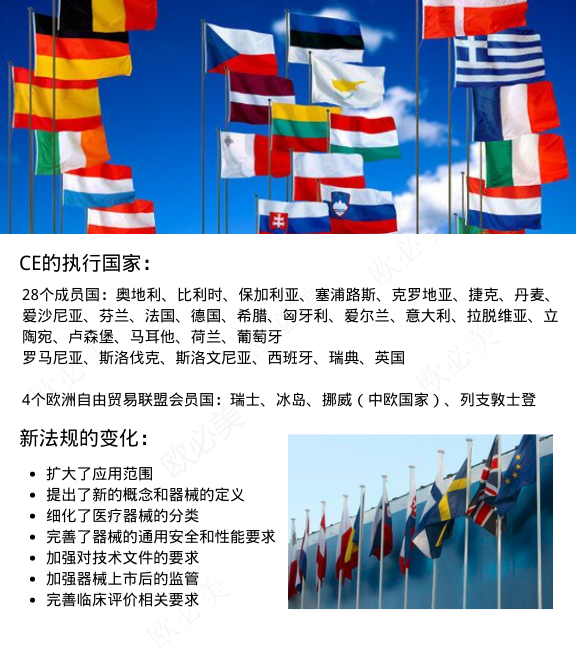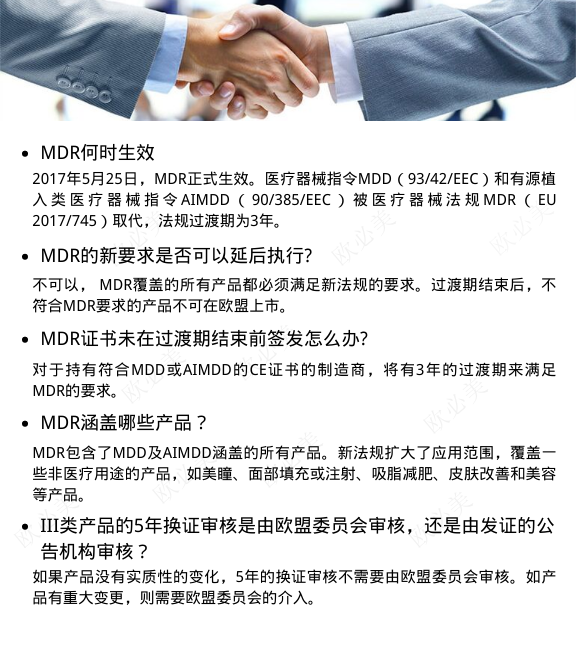634/5000
So, what are the differences between MDR and MDD? Compared with THE MDD directive, the main changes of MDR regulations are as follows:
1. Strengthen manufacturer's responsibility: appoint compliance person/continuously update technical documents/financial guarantee.
2. More rigorous pre-market review: Some products will be classified higher/clinical evidence requirements will be strengthened/specific high-risk devices will be subject to a pre-market review mechanism, with the participation of an EU-level expert group to conduct a more rigorous prior evaluation.
3. Expanded scope of application: Non-medical devices whose function and risk characteristics are similar to those of medical devices will also be covered by MDR.
4. Enhanced transparency and traceability: Devices are identified and tracked using a unique Device Identification (UDI) system/Patients will receive implant cards with all basic information/a revised, publicly accessible EUDAMED database will be established containing device certification information and clinical studies, vigilance, and post-market surveillance information.
5. Increased vigilance and market regulation: Once devices are available on the market, manufacturers will have to collect data on their performance and eu countries will coordinate more closely in the field of market regulation.
In general, the new MDRS and IVdrs strengthen the system and add regulations for high-risk devices, such as non-medical devices with characteristics similar to medical devices (such as colored contact lenses used for cosmetic purposes). Increased transparency and traceability of products to patients and the establishment of a central electronic database (Eudamed), medical devices will have a unique identification number to enhance their traceability throughout the supply chain.
MDR mandatory implementation date: May 26, 2020
That is to say, from May 26, 2020, we can no longer apply for certification in accordance with THE MDD directive. From 2019 to May 26, 2020, we can continue to apply for certification in accordance with the MDD directive. The CE certificate of THE MDD directive will be invalid in 2024.



